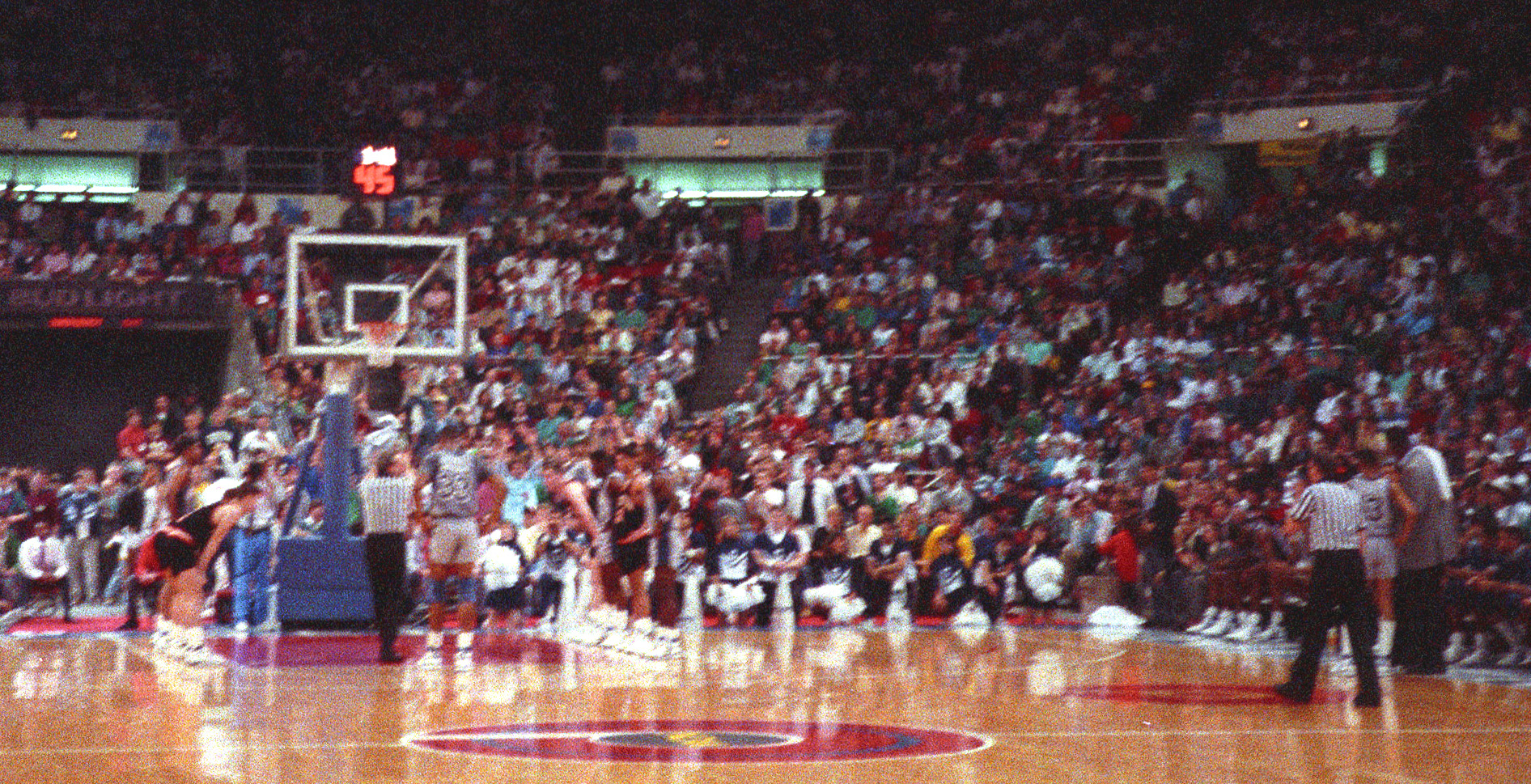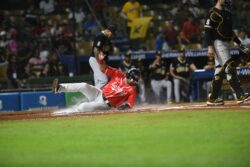Before Friday, there had been 135 matchups between 16 and one seeds in the NCAA tournament since the field expanded to 64 teams back in 1985. The one seed was victorious every single time. Then, along came the UMBC Retrievers. The champions of the America East Conference, playing in the Big Dance for just the second time in their history, defeated the number one overall ranked Virginia Cavaliers 74-54 on Friday, in one of the most shocking upsets in sports history. The Retrievers, who were 20.5 point underdogs, used a shooting barrage in the second half to pull away, stunning Virginia and the entire sports world. Despite losing to nine seed Kansas State in the Round of 32, UMBC has left an indelible mark on March Madness history as the first team to pull off this incredible feat.
It is worth mentioning that, in the women’s tournament, Harvard accomplished the same feat back in 1998, knocking off one seed Stanford. Stanford was a powerhouse in the mid-late 90s, having reached the Final Four in each of the previous three years. On the men’s side, though, 16 seeds had only come within a sniff of the glory that comes with such a magnificent achievement. With UMBC finally pulling it off, it seems like an appropriate time to take a look back at those squads that came up just short.
Here are five of those teams:
The 1985 Fairleigh Dickinson Knights (vs. Michigan Wolverines)
The Knights finished the 1984-85 regular season second in the Eastern Collegiate Athletic Conference Metro Division, but won three straight close games in the conference tournament, including a 63-59 win over Loyola University Maryland in the final to qualify for the NCAA tournament. In the first round, they were matched up with a Michigan team that had won the Big Ten title and lost just four games all season. The Wolverines were led by their towering 6’11” center Roy Tarpley who had won Big Ten Player of the Year, averaging a double-double with 19 points and 10 rebounds per game. The Knights had a solid frontcourt themselves, led by the trio of forwards Larry Hampton and Jaime Latney, and center Gary Wilson, but no one expected them to put up much of a fight against mighty Michigan.
Against all odds, the squad from Teaneck, New Jersey, in its first NCAA tournament, held a 26-20 lead by the end of the first half. The Knights took advantage of the absence of a shot clock, working the ball around, and held the ball for over a minute four times in the first half. Michigan did not regain the lead until there were just four and a half minutes left in the game. Even after the Wolverines extended their lead, the Knights were able to pull it back to a 57-55 game with ten seconds remaining, taking advantage of Tarpley’s time on the bench due to foul trouble. In the end, Michigan was bailed out by its bench and escaped with a 59-55 victory. Unsurprisingly, Michigan head coach Bill Frieder was not pleased with his team’s performance. “I just hope these kids are smart enough and mature enough to realize how close they were to busing it home,” he said. It remains unclear if his players heard the message, as they dropped their next game to the eight seed Villanova Wildcats, who would go on to win the tournament. That said, in the first season with an expanded field, this game was clear evidence of the parity this tournament has to offer.
The 1989 Princeton Tigers (vs. Georgetown Hoyas)
The 1989 tournament actually had three 16 seeds nearly win their opening round matchup, as the Oklahoma Sooners beat East Tennessee State by the narrowest of margins, 73-72, and McNeese State nearly toppled Illinois, losing 77-71. For some reason, though, I am choosing this matchup instead. In what Sports Illustrated called “The game that saved March Madness,” the Ivy League champion Princeton Tigers went up against the Big East champion Georgetown Hoyas led by freshman Alonzo Mourning and Big East Player of the Year Charles Smith. Under head coach John Thompson, Georgetown was a dominant brand in college hoops in the 1980s, having won the title in 1984 and been runner up in 1982 and 1985. Needless to say, the Hoyas were a popular pick to win the title in 1989 and few saw Princeton as a significant obstacle to that goal. According to AP college basketball writer Jim O’Connell, many saw parallels between this squad and the one that had won just five years prior. “Coming in, they were it,” he said. “This was going to be Alonzo Mourning’s Patrick Ewing year. Except for [John Thompson’s] championship team, this might have been the best he had.” The Tigers had other ideas. Led by legendary head coach Pete Carril in his 22nd of 29 seasons with Princeton, the Tigers were a young team aside from senior captain and Ivy League Player of the Year Bob Scrabis. The nation’s leading team in scoring defense, Princeton beat Harvard in its final regular season matchup to secure the Ivy League title and a berth in the NCAA Tournament.
In the first half, the Tigers ran Carril’s famous “Princeton Offense” to perfection, running down the 45 second shot clock, moving the ball around, and capitalizing on backdoor cuts. Mourning admits to initially not taking his opponent very seriously, but soon become frustrated with the way Princeton played offensively. “They kind of lulled us to sleep with the backdoor cuts and running the shot clock down,” he said. “As soon as we slipped up defensively, they took advantage.” By the halftime break, Georgetown trailed 29-21. In the second half, the Hoyas clawed their way back primarily by dominating on the glass with Mourning leading the way. He had 13 rebounds on the game, including seven on the offensive end. With eighteen seconds left in the game, Scrabis rebounded a missed free throw by Mourning and Princeton had a chance to win the game, down one point. Scrabis got the ball at the top of key, but Mourning jumped from the middle of the lane to swat his shot away. “The way Mourning got out there, it’s insane,” said Princeton center Kit Mueller. With one second left in the game, Princeton had one final play, but Mueller missed a shot at the buzzer and Georgetown won. Goliath may have been victorious, but it was David’s play that inspired millions and gave CBS all the encouragement it needed to sign a billion dollar contract to broadcast the tournament for seven years, exposing March Madness to a larger audience and helping to maintain the sporting event we know and love today.
The 1990 Murray State Racers (vs. Michigan State Spartans)
Despite playing in the Ohio Valley Conference, Murray State is no stranger to the Big Dance, having played in the tournament 16 times in the school’s history, most recently losing in the first round this year as a 12 seed. That being said, back in 1990, few thought taking the Big Ten champion Michigan State Spartans to overtime in the first round of the NCAA Tournament was a remote possibility for the squad from Murray, Kentucky. The Spartans, who won 28 games during the regular season, were led by future NBA star and 20 points per game scorer, Steve Smith. But the Racers had a star of their own: Popeye Jones. Jones was the Ohio Valley Conference Player of the Year in 1990, averaging over 19 points and 11 rebounds per game. He went on to win the award again the next year, and eventually became a solid contributor in 11 seasons at the NBA level.
Throughout the game, Michigan State was unable to get into a rhythm on either end of the court. Despite shooting just under 50 percent from the field on the game, the Spartans turned the ball over 15 times and had trouble stopping Jones on the other end. Jones put on a spectacular display, scoring 37 points while taking half of his team’s shots. Despite their struggles, the Spartans led by three with mere seconds remaining in regulation, but the Racers were not done yet. Guard Greb Coble hit a three pointer as time expired to force overtime for the first and only time ever in a 16-1 matchup. Six early points from Smith in overtime brought Michigan State to 71, but the Racers were right there with them after tying the game on a three pointer from guard Frank Allen. 24 seconds later, Spartan guard Kirk Manns hit a difficult scoop shot and Jones missed the potential game tying bucket on the other end. Michigan State grabbed the rebound and sealed the 75-71 victory with a fastbreak layup. After the game, Michigan State head coach Jud Heathcote was evidently stunned by the events that had transpired. “We got a reprieve,” he said. “I’m still trying to figure out if we won or we lost.”
The 1996 Western Carolina Catamounts (vs. Purdue Boilermakers)
Purdue really had no excuse for letting this one get so close. This was Western Carolina’s first and only appearance in the NCAA Tournament as a team that had lost 10 of its first 13 games on the season. Despite facing subpar competition throughout the year, the Catamounts finished with a less than stellar 17-14 regular season record. Nevertheless, led by Southern Conference Player of the Year Anquell McCollum, who averaged 25 points per game, the Catamounts defeated Davidson in the conference tournament final to earn a spot in the Big Dance. Western Carolina was slated to face a Purdue team that had earned its second number one seed in three seasons. The Boilermakers were a much more balanced team, with seven players averaging seven or more points per game. Their best two players were guard Chad Austin and future NBA All Star, center Brad Miller.
The Catamounts played aggressively in the first half and were rewarded. McCollum and forward Jarvis Graham led the way as Western Carolina hit 15 of 26 shots in the first half. However, their bottom thirty ranked defense meant that their lights out shooting did not contribute to a big advantage on the scoreboard. Purdue led at halftime 36-35, but the game remained tight through the final minute. An offensive rebound and putback from senior forward Brandon Brantley gave Purdue the lead with just over a minute to go. With 11.6 on the clock, Miller missed the first free throw of a one-and-one, giving the Catamounts a chance to tie or take the lead. Point guard Joel Fleming missed a three pointer, but Western Carolina grabbed the offensive rebound. As the buzzer sounded, guard Joe Stafford missed another jumper, and the Boilermakers survived a sloppy game, winning 73-71.
The UNC Asheville Bulldogs (vs. Syracuse Orange)
Syracuse had a dominant 2011-2012 regular season. The Orange won 34 games and lost just once in conference play in a year in which nine Big East teams made the NCAA Tournament. Syracuse was an undeniable number one seed, but there were still some who had trepidations about their performance without their starting center, Fab Melo who was declared ineligible for academic reasons. And lest we forget that Jim Boeheim’s Orange was the first ever number two seed to fall to a 15 when they lost to Richmond back in 1991.
In contrast to Syracuse’s legendary history, the Bulldogs were making just their third NCAA Tournament appearance under head coach Eddie Biedenbach. They swept through the Big South Conference with ease, claiming the regular season title with a 16-2 record and winning all three conference tournament games by a combined margin of 68. The Bulldogs had five players averaging double digit scoring and ranked fifth in the country in scoring as a team.
Early in the game, the Bulldogs continued to demonstrate the offensive efficiency they had all season. Led by J.P. Primm, who had 18 points on 5-9 shooting in the game, UNCA took a 34-30 lead into halftime. In the second half, the Bulldogs’ defense lapsed and Syracuse reserve forward James Southerland took over. He scored 13 points in the second half alone, including a turnaround jumper at the 6:17 mark that gave the Orange the lead for good. In the final couple minutes, the Bulldogs kept the game close, but a couple of controversial calls went against them and contributed to the Syracuse victory. With 1:20 left, Syracuse senior guard Scoop Jardine missed the first free throw of a one-and-one, but Primm was called for a lane violation. Jardine then sunk 2-2 to put his team up six. On the next possession, UNCA forward Jaron Lane hit a three pointer to make it a one possession game. More controversy ensued on the following play, as the inbound appeared to go off the hands of Syracuse’s Brandon Triche, but the ball was awarded to the Orange. After the game, the NCAA coordinator of officials said he would have given the ball to UNCA. Syracuse would go on to make all their free throws in the remaining seconds to seal a 72-65 victory. Biedenbach was disappointed in postgame interviews after experiencing some unfair officiating and seeing his top scorer on the season, guard Matt Dickey go 1-12 from the field. “We gave it everything we had. We battled the best that we could,” he said. “These guys are great. They deserved a better fate than they had today.” Boeheim had a slightly different take. “I don’t think luck had anything to do with this game today,” he said. “I think the better team won.” The Orange was able to shake off its early difficulties to progress to the Elite Eight before falling to Ohio State. UNCA returned to the tournament in 2016, losing in the first round to Villanova, the eventual champion.





